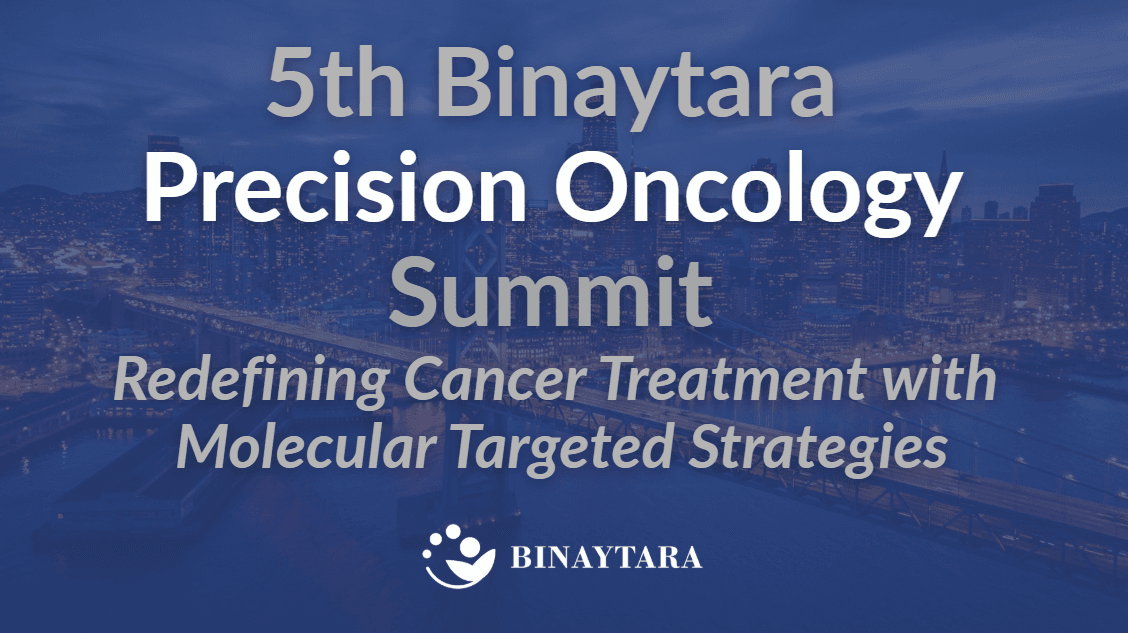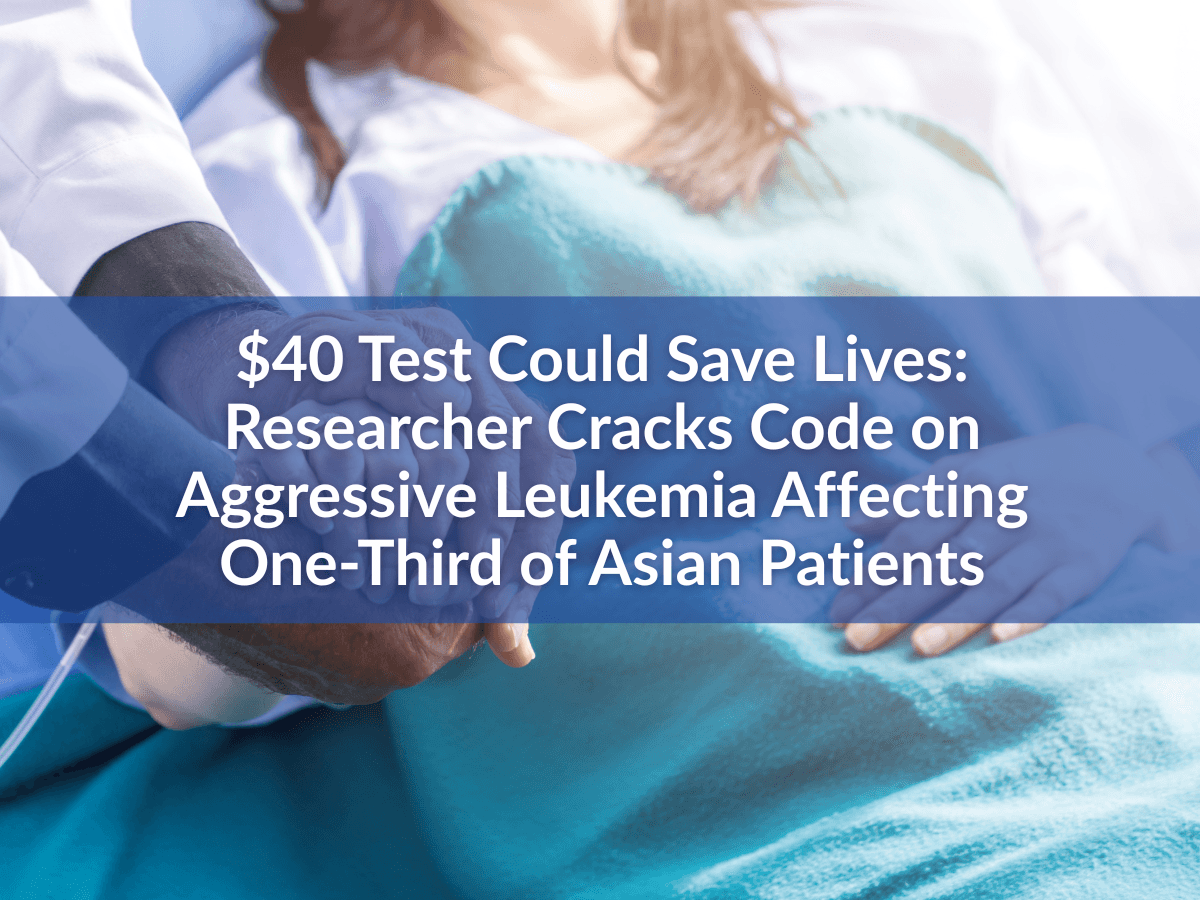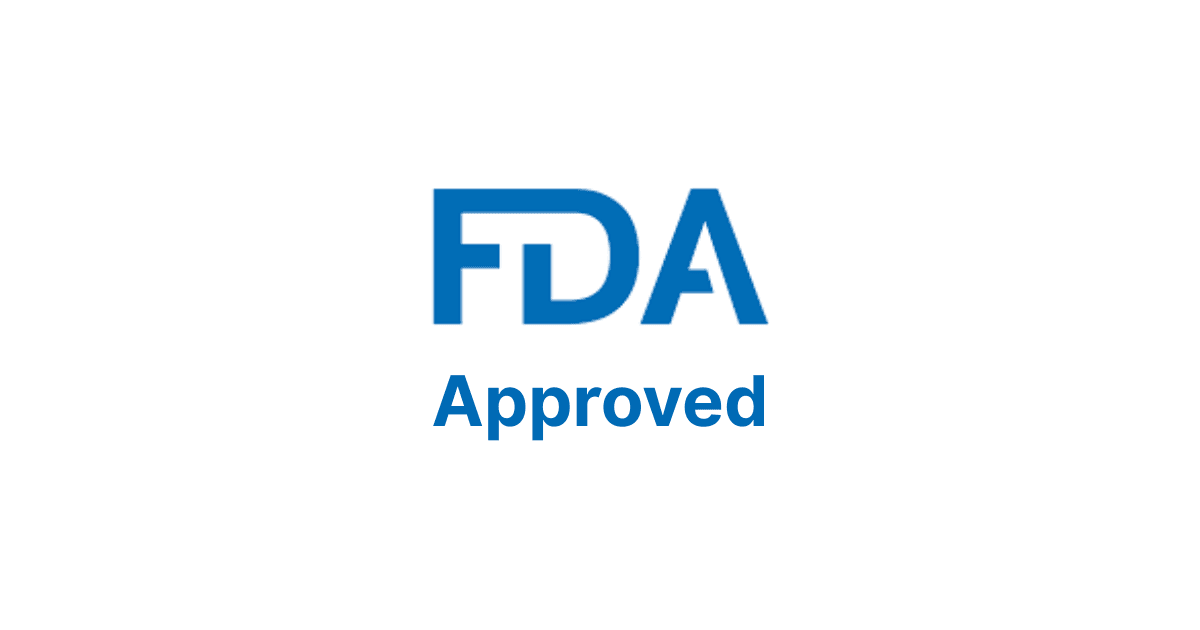
The Cancer News
AN AUTHORITATIVE RESOURCE FOR EVERYTHING ABOUT CANCER
Molecular Tumor Board 2: Interesting and Challenging Cases in Precision Oncology

This article summarizes the transcript from Session 11 of the 5th Binaytara Precision Oncology Summit. It has not been reviewed by the speakers and may contain errors.
Menin Inhibitor use in AML by Sachdev P Thomas, MD
 Dr. Sachdev Thomas
Dr. Sachdev Thomas
Current Status and Practical Takeaways
- On-Label Approval: Approved for relapsed/refractory KMT2A-rearranged leukemia in both adult and pediatric patients.
- NPM1 Leukemia: Currently being evaluated in ongoing clinical trials. A decision on Leftomative is anticipated soon.
- Clinical Activity: The inhibitors demonstrate modest activity as single agents but provide clinically significant improvements for KMT2A-rearranged and NPM1 leukemia.
- Resistance: Resistance to these inhibitors can develop rapidly.
- Future Direction: Expect a rapid evolution of combination therapies. Understanding the mechanisms of resistance is crucial for developing effective combinatorial strategies and schedules. Clinical Considerations
- Drug Interactions: A notable interaction exists with CYP3A inhibitors, requiring clinical attention.
- Differentiation Syndrome: This is a known clinical event associated with the therapy. Ongoing Research
- Key Trials: The 101 trial is expanding to include NBF1-mutated patients. Several other trials are also in progress.
IDH Inhibitor case by Tian Yi Zhang, MD, PhD
 Dr. Tian Yi Zhang
Dr. Tian Yi Zhang
Patient Case Presentation: 70-Year-Old Woman Initial Presentation: Pancytopenia, low hemoglobin, low platelets, and elevated LDH, uric acid, and FOS, suggesting a rapidly growing tumor. Diagnosis: Acute Myeloid Leukemia (AML). Bone Marrow: 79% blasts. Cytogenetics: PsyQ deletion. NGS: IDH2 (R140) mutation, placing her in the adverse AML category. First-Line Treatment Started on Decitabine in combination with Venetoclax. Response: Responded well for two cycles but developed refractory disease by the third cycle. Second-Line Therapy and Mechanism of Action
- Mechanism of Enasidenib (IDH2 Inhibitor):
- Mutant IDH2 produces 2-hydroxyglutarate, which inhibits TET2, leading to DNA hypermethylation and a block in cell maturation.
- Enasidenib preferentially inhibits the mutant IDH2 enzyme, reducing the oncometabolite and allowing for cell differentiation.
- Patient's Second-Line Treatment: Switched to Enasidenib plus a different hypomethylating agent (HMA). Complication (Differentiation Syndrome): On day 7, developed shortness of breath, rapid weight gain, and pulmonary edema. Diagnosed with differentiation syndrome. Management Treated with steroids without holding the differentiation agent. Hydroxyurea is sometimes used for cytoreduction in patients with high blast counts. Outcome The patient was successfully supported through the syndrome, achieved a complete remission (CR) in two cycles, and was bridged to an allogeneic transplant. Clinical Data and Future Directions
- Clinical Trial Data (Phase 1b/2):
- In a study of ~240 relapsed/refractory AML patients, the median time to achieve CR was approximately 5.5 cycles.
- Median overall survival (OS) for monotherapy was 9.3 months for all patients.
- Post-Transplant Management: Detection of residual IDH2 mutation before transplant is predictive of a higher relapse risk.
- IDH2 inhibitors are often used as maintenance therapy following transplant.
- Preventative Trials: IDH mutations are recognized as pre-leukemic (CHIP). Clinical trials are underway to evaluate IDH inhibitors for preventing the progression of CHIP to MDS or AML.
JAK/STAT Inhibitor by William Shomali, MD
 Dr. William Shomali
Patient Case Presentation: 80-Year-Old Man
Dr. William Shomali
Patient Case Presentation: 80-Year-Old Man
- Diagnosis: Relapsed Chronic Myelomonocytic Leukemia (CMML).
- Presentation: Worsening fatigue, falls, spleen enlarged to 17 cm, and hyperleukocytosis (white cells 105,000).
- NGS Findings: Revealed three key mutations:
- CSF3R: High variant allele frequency (VAF) of 80%.
- SRSF2: VAF of 46%.
- ASXL1: VAF of 39%.
- Prognosis: Using the new GLAST model from the Mayo Clinic, the patient was classified as high-risk, with a median survival of 16 months. Treatment and Mechanism
- CSF3R Mutation: This mutation in the G-CSF receptor, specifically the T618I variant, leads to constitutive activation of the JAK-STAT signaling pathway and subsequent neutrophil proliferation. It is common in chronic neutrophilic leukemia (CNL).
- Targeted Therapy: Based on the CSF3R mutation, the patient was started on the JAK inhibitor Ruxolitinib. Patient Course and Outcome:
- Hydroxyurea was tapered off as Ruxolitinib was initiated and dosed up to 25 mg.
- After 3.5 months: Spleen size decreased from 17 cm to 5.5 cm, white blood cell count reduced to 38,000, and the patient became transfusion-independent for the last 5 months. Management of Anemia and Take-Home Messages
- Managing Anemia on JAK Inhibitors: Options include dose reduction, adding an ESA, or using newer agents like Momelotinib and Pacritinib.
- Momelotinib/Pacritinib Mechanism: These drugs inhibit ACVR1 (ALK2), which in turn suppresses hepcidin production and can improve anemia. Key Takeaways:
- Extracellular CSF3R mutations activate the JAK-STAT pathway and are a viable target for JAK inhibitors.
- The GLAST model is a new tool for survival prediction in CMML.
BCL2 Inhibitor case by Madhav Rao Seshadri, MD
Patient Case Presentation: 55-Year-Old Man (at diagnosis)
- Diagnosis (2007): Chronic Lymphocytic Leukemia (CLL) with IGHV-mutated status and trisomy 12.
- Treatment History:
- Surveillance: 5 years.
- Bendamustine (2012): Partial response.
- Ibrutinib (covalent BTK inhibitor): ~6-year response before progression. Navigating Treatment Resistance
- Resistance Mechanisms:
- Covalent BTKi Resistance: The C481S mutation in BTK prevents Ibrutinib from binding.
- Non-Covalent BTKi Resistance: The patient's NGS revealed a BTK L528W mutation, which confers resistance to non-covalent inhibitors like Pirtobrutinib. Treatment Decision: Due to the L528W mutation, Pirtobrutinib was not a suitable option. The patient was instead started on a combination of Obinutuzumab and Venetoclax (a BCL-2 inhibitor). Venetoclax Mechanism: Works via a different pathway by inhibiting the anti-apoptotic protein BCL-2, thereby promoting cancer cell death. Outcome: The patient had a very good response to the Venetoclax-based regimen, with his white blood cell count normalizing within a month. Measurable Residual Disease (MRD) and Future Directions
- MRD Assessment: A more sensitive method for evaluating treatment response than morphology. Can be done via flow cytometry or NGS.
- Clinical Utility of MRD:
- MRD status is highly prognostic after fixed-duration Venetoclax-based therapy.
- Data from the MURANO and CLL-14 trials show that patients achieving undetectable MRD have superior progression-free survival.
- Future of CLL Therapy:
- Overcoming Resistance: Identifying new resistance mechanisms and developing novel agents (e.g., BTK protein degraders) to overcome them.
- MRD-Guided Therapy: Increasing use of MRD status to guide treatment decisions, such as extending or discontinuing therapy, to optimize the risk-benefit ratio. Multiple prospective trials are currently investigating this approach.
Tumor Agnostic FDA Drug Approvals by Ana I. Velazquez Manana, MD
 Dr. Ana l. Velazquez
Case Study: 75-Year-Old with Stage 3 Lung Cancer
Dr. Ana l. Velazquez
Case Study: 75-Year-Old with Stage 3 Lung Cancer
- Patient Profile: A 75-year-old retired teacher with a history of hypertension and a 25-year smoking history presented with unresectable stage 3 lung cancer.
- Initial Findings: Imaging revealed a 4.5 cm mass. A PET scan and MRI showed no other sites of disease. An endobronchial biopsy confirmed differentiated cancer. Biomarker Results:
- Next-Generation Sequencing (NGS) revealed several mutations, including NF1, TP53, and RB1, a signature associated with poor outcomes in lung cancer.
- PD-L1 expression was 35%. Treatment and Progression:
- The patient received standard-of-care treatment with concurrent chemoradiation, followed by consolidation durvalumab.
- Upon disease progression, a review of prior tests and additional immunohistochemistry (IHC) testing revealed HER2 overexpression (IHC 3+). This is distinct from HER2 gene amplification (measured by FISH) or HER2 mutations. Current FDA-Approved Tumor-Agnostic Therapies A growing number of therapies are approved based on a biomarker, regardless of the tumor's origin.
- MSI-High/dMMR: Pembrolizumab (approved in 2017).
- NTRK Fusions: Larotrectinib and Entrectinib.
- BRAF V600E: Dabrafenib plus Trametinib.
- TMB-High (Tumor Mutational Burden): Pembrolizumab.
- HER2 Overexpression (IHC 3+): Trastuzumab deruxtecan (T-DXd), received accelerated approval in 2024.
- ROS1 Fusions: Repotrectinib (approved in June 2024). Focus on HER2 Overexpression and T-DXd
- Mechanism: Trastuzumab deruxtecan (T-DXd) is an antibody-drug conjugate (ADC) with a high drug-to-antibody ratio of 8.
- Supporting Data: The approval for HER2-positive solid tumors is based on data from multiple trials, including the DESTINY-PanTumor02 Phase 2 basket trial.
- Efficacy is significantly higher in tumors with IHC 3+ expression compared to IHC 2+.
- A pooled analysis across three trials for IHC 3+ tumors demonstrated an objective response rate of over 50% and a median duration of response of 11.2 months. Real-World Data and Adoption
- Prevalence: The prevalence of HER2 overexpression varies significantly by tumor type. For example, it is approximately 8% in bladder cancer but lower in lung cancer and sarcoma (~2%).
- Opportunity: A large-scale analysis of 295,000 cases found that 5.4% of patients had a unique tumor-agnostic biomarker that could qualify them for a targeted therapy. However, the real-world adoption of these treatments remains low, indicating a significant opportunity to improve patient outcomes through increased testing and awareness. Key Conclusions and Recommendations
- There is a need to increase awareness of tumor-agnostic biomarkers and their corresponding FDA-approved therapies.
- Broad biomarker testing, including both NGS and IHC panels (specifically for HER2), should be performed for all patients with advanced solid tumors, ideally from the initial tissue sample.
- Clinicians must understand the distinctions between different types of biomarkers for the same gene (e.g., HER2 overexpression via IHC, gene amplification via FISH, and activating mutations via NGS).





